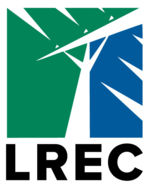Rate of return is a commonly heard phrase in the business world, but how do we gauge this for members of Lake Region Electric Cooperative?
Maybe it makes you think of the retirement of capital credits based on our not-for-profit business model. That would be true, but it’s not the entire answer. Certainly, rate stability must also be a key factor in the rate of return equation.
I believe there is a third component to rate of return and it is the reliability of electric service.
In fact, we’ve been persistently focused on improving service reliability and minimizing power outages. After all, we understand that electricity is the lifeblood of modern society. Not much functions well when we’re without electricity.
As we strive to improve, I’m proud of the gains that have been made. When compared to 15 years ago, Lake Region has cut outage times in about half! However, there is always room for continued improvement and we continue to keep service reliability as a top focus.
Your board of directors recognizes the critical nature of service reliability, too. The board recently authorized an additional $500,000 earmarked specifically towards projects identified in our new Distribution Grid Improvement Program. That’s no small commitment. It demonstrates a deep obligation to providing exceptional service. This is budgeted in addition to our routine line maintenance programs and construction work plan projects.
The use of data analytics is critical in the Distribution Grid Improvement Program. We’ve integrated technology that pinpoints the location of past outages with the eyes and expertise of our lineworkers in the field. As a result, we have identified the worst performing areas of our grid. This information allows our lineworkers to highly scrutinize these areas and determine the best plan of action.
Here’s what we will pursue, based on the findings from our lineworkers. We will be eliminating numerous old poles from swampy areas, rerouting some cross-country power lines to placement along the roadways, eliminating river crossing, and also converting some overhead line to underground. We are examining the placement of line fusing and sectionalizing equipment. Adding line fuses and sectionalizing equipment in strategically located spots should greatly improve reliability.
While we can’t eliminate all possible causes of outages, adding additional fusing will help reduce the impacted area. Let’s use a simple and common example. A squirrel makes fatal contact between a single-phase power line and power pole that knocks out power on that line. The outage will affect everyone served from that line, all the way back to the fusing point. Adding fusing could make the difference between just a few members experiencing the outage or a few hundred members being affected.
From the lineworkers’ perspective, having the ability to sectionalize the line is extremely valuable, especially when an outage occurs at night or in inclement weather. It shortens the length of power line that needs to physically be patrolled and isolates the specific area to be examined. In turn, this can reduce the outage time for members.
 Through 2021, we’ll continue with our scheduled construction work plan, maintenance, and rights-of-way management. At some time, you’ll likely see our employees in your area. We’ll try to keep you informed as to the work they’ll be conducting. In the meantime, please give our office a call should you have any specific questions or concerns.
Through 2021, we’ll continue with our scheduled construction work plan, maintenance, and rights-of-way management. At some time, you’ll likely see our employees in your area. We’ll try to keep you informed as to the work they’ll be conducting. In the meantime, please give our office a call should you have any specific questions or concerns.

 Lake Region Electric Cooperative
Lake Region Electric Cooperative